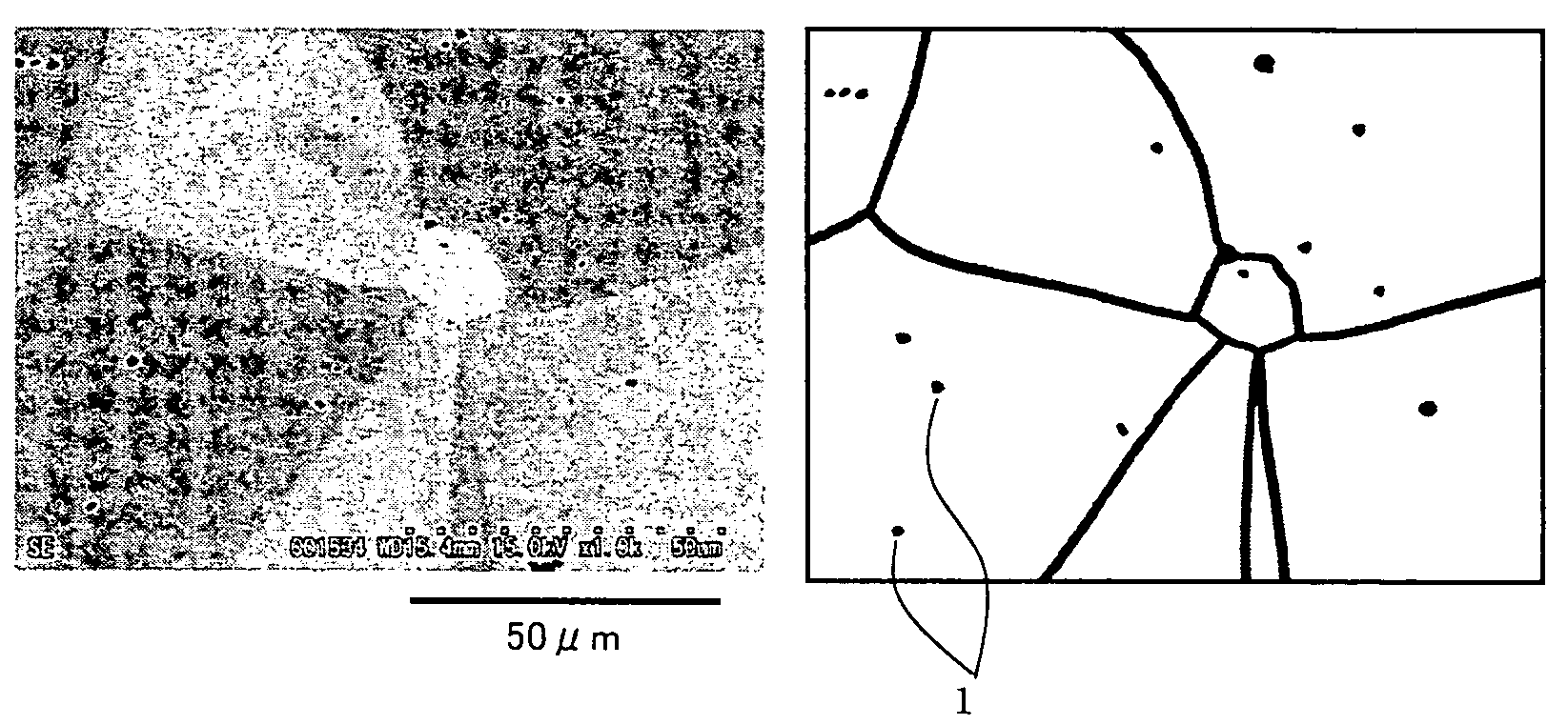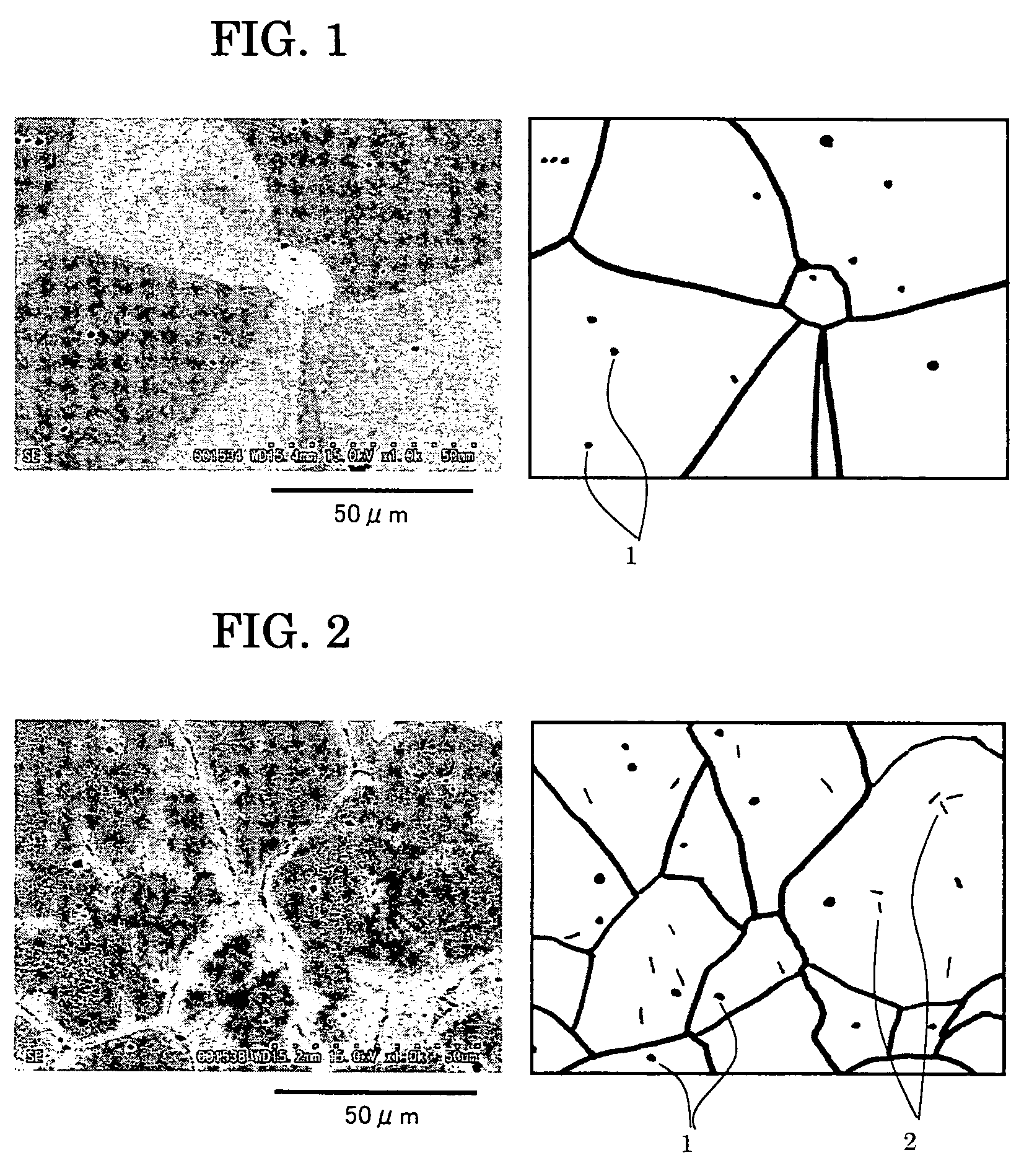Heat resistant alloy for use as material of engine valve
a technology of heat resistance alloy and engine valve, which is applied in the direction of ncf751 and other directions, can solve the problems of insufficient structural stability, insufficient resource saving and cost reduction, and insufficient fe-based alloy, and achieves excellent toughness, high temperature strength, and low cost.
- Summary
- Abstract
- Description
- Claims
- Application Information
AI Technical Summary
Benefits of technology
Problems solved by technology
Method used
Image
Examples
examples
[0060]Alloys according to the present invention and alloys of comparative examples were melted in a vacuum induction furnace into steel ingots of 10 kg, were homogenized at 1,180° C. for 20 hours and then forged into square bars with a side of 30 mm at a temperature of 1, 150° C. The chemical compositions of alloy Nos. 1 to 9 according to the present invention, a conventional alloy No. 21 and alloy Nos. 22 to 27 of comparative examples are shown in Table 1. Here, the conventional alloy No. 21 is an alloy equivalent to NCF751; the alloy Nos. 22, 23 and 27 of the comparative examples are those disclosed in JP H11-229059-A2; and particularly the alloy No. 27 of the comparative example is an alloy equivalent to an example No. 6 in JP H11-229059-A2. In addition, only the alloy No. 23 of the comparative example was not subjected to the above-described homogenizing heat treatment. Furthermore, in order to evaluate samples having shapes close to an actual valve material, a steel ingot of an...
PUM
| Property | Measurement | Unit |
|---|---|---|
| temperature | aaaaa | aaaaa |
| temperature | aaaaa | aaaaa |
| temperature | aaaaa | aaaaa |
Abstract
Description
Claims
Application Information
 Login to View More
Login to View More - R&D
- Intellectual Property
- Life Sciences
- Materials
- Tech Scout
- Unparalleled Data Quality
- Higher Quality Content
- 60% Fewer Hallucinations
Browse by: Latest US Patents, China's latest patents, Technical Efficacy Thesaurus, Application Domain, Technology Topic, Popular Technical Reports.
© 2025 PatSnap. All rights reserved.Legal|Privacy policy|Modern Slavery Act Transparency Statement|Sitemap|About US| Contact US: help@patsnap.com


